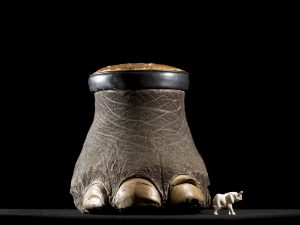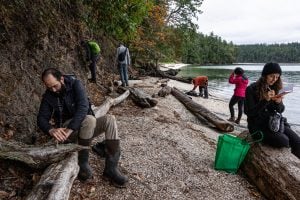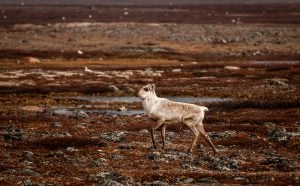
Environment
The sixth extinction
The planet is in the midst of drastic biodiversity loss that some experts think may be the next great species die-off. How did we get here and what can be done about it?
- 4895 words
- 20 minutes
This article is over 5 years old and may contain outdated information.
Wildlife


Wolverine mortality was a byproduct of wolf poisoning campaigns in the 1960s and 1970s, and trapping throughout their range had similar impacts on populations. “Wolverines are not geared for a quick rebound,” says Jason Fisher, a senior wildlife ecologist in Alberta. The species has a low fertility rate, and young have slim chances of survival because of the wolverine’s marginal existence.
Scientists, such as Fisher and Canmore-based researcher Tony Clevenger, have only recently started studying Alberta’s wolverine population. Clevenger’s work focuses on the effects of the Trans- Canada Highway, which bisects prime habitat in Banff and Yoho national parks. It appears as though roadways delineate individual wolverine territories, says Clevenger, fragmenting and effectively shrinking available habitat. “It’s more of a road avoidance problem than a roadkill problem. They tend to have boundaries on the edge of highways and they don’t cross them.”
Northern Alberta’s boreal forest is increasingly home to a patchwork of seismic lines for oil and gas exploration. That’s bad news for wolverines, as the animal has been shown to avoid such areas completely. Fisher wonders if such areas provide better habitat for coyotes, a wolverine competitor. Meanwhile, Alberta’s wolverine population tends to stick to rugged, undeveloped alpine zones. Similarly, wolverines occupy the boreal forest of far northwestern Ontario, a vast, roadless area beyond the current limit of forestry operations.
In Alberta’s Willmore Wilderness Area, north of Jasper, Fisher detected 26 wolverines occupying 90 per cent of the area — drastically greater numbers than in the surrounding unprotected lands. This finding supports the importance of establishing corridors between patches of prime habitat to help create a viable wolverine population throughout the Rockies. “You need to look at the big picture,” says Canmore-based researcher Clevenger. “Knowing how wolverines disperse to isolated areas is really important to managing and conserving the species over the long term.”
Trapping records provide the best insights into wolverines’ historical and current distributions — a key first step in their management. The Alberta Trappers Association has partnered with the Alberta Conservation Association to build the province’s wolverine dataset. Trappers are helping biologist Doug Manzer collect wolverine DNA from non-lethal hair traps to assess the population. “Wolverines are not a target species for most trappers,” notes Manzer. They’re “an icon of the Canadian wilderness, and trappers want to see them on the landscape. For all of us, it’s just nice to know they’re there.”
Are you passionate about Canadian geography?
You can support Canadian Geographic in 3 ways:

Environment
The planet is in the midst of drastic biodiversity loss that some experts think may be the next great species die-off. How did we get here and what can be done about it?

Wildlife
An estimated annual $175-billion business, the illegal trade in wildlife is the world’s fourth-largest criminal enterprise. It stands to radically alter the animal kingdom.

People & Culture
Naming leads to knowing, which leads to understanding. Residents of a small British Columbia island take to the forests and beaches to connect with their nonhuman neighbours

Wildlife
Habitat loss, pollution, climate change have all contributed to steep declines of some species since 1970